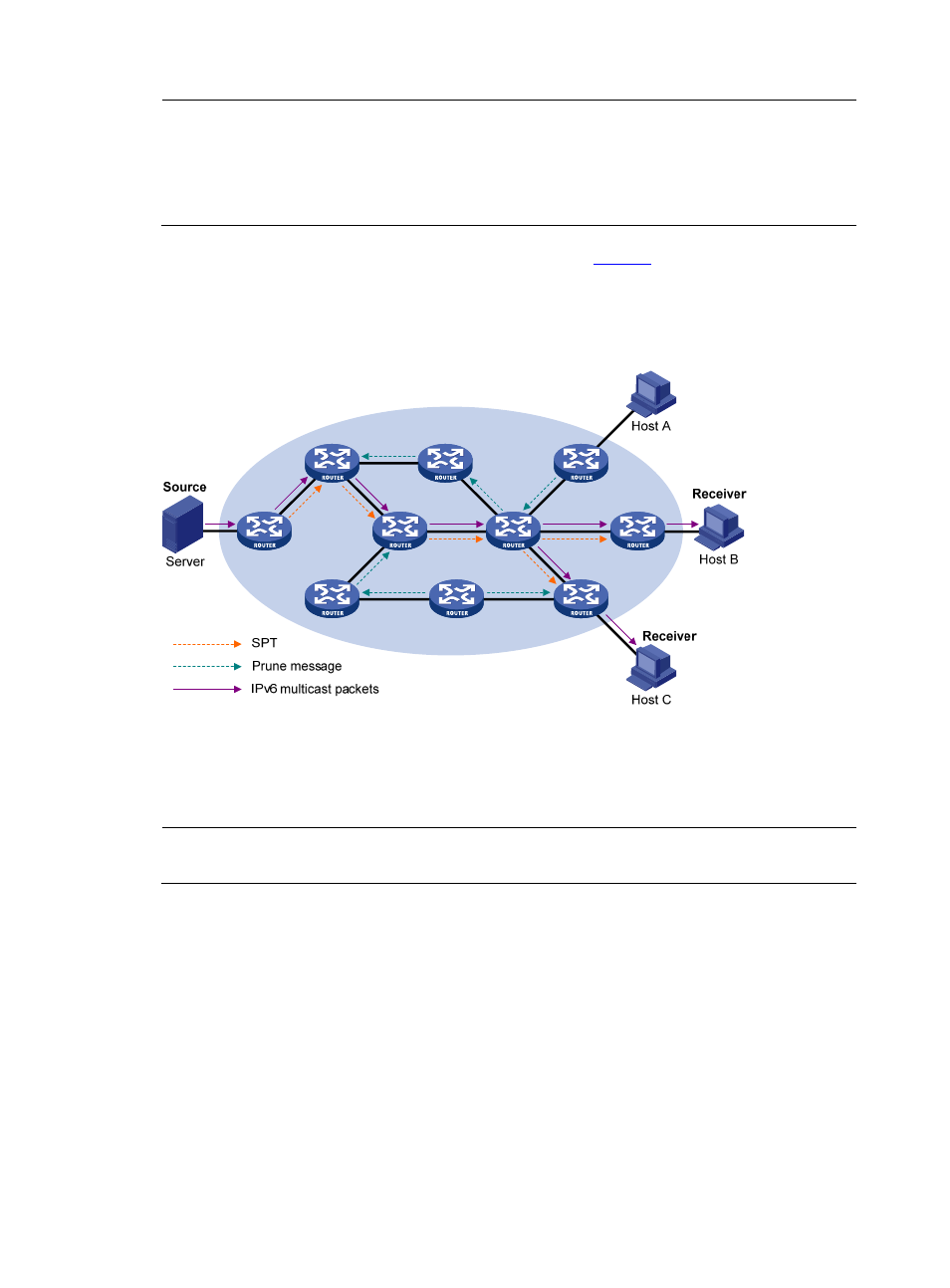Graft – H3C Technologies H3C SecPath F1000-E User Manual
Page 166

3
NOTE:
•
An (S, G) entry contains the multicast source address S, IPv6 multicast group address G, outgoing
interface list, and incoming interface.
•
For a given IPv6 multicast stream, the interface that receives the IPv6 multicast stream is referred to as
“upstream”, and the interfaces that forward the IPv6 multicast stream are referred to as “downstream”.
A prune process is first initiated by a leaf router. As shown in
, a router without any receiver
attached to it (the router connected with Host A, for example) sends a prune message, and this prune
process goes on until only necessary branches are left in the IPv6 PIM-DM domain. These branches
constitute the SPT.
Figure 1 SPT establishment in an IPv6 PIM-DM domain
The “flood and prune” process takes place periodically. A pruned state timeout mechanism is provided.
A pruned branch restarts multicast forwarding when the pruned state times out and then is pruned again
when it no longer has any multicast receiver.
NOTE:
Pruning has a similar implementation in IPv6 PIM-SM.
Graft
When a host attached to a pruned node joins an IPv6 multicast group, to reduce the join latency, IPv6
PIM-DM uses the graft mechanism to resume IPv6 multicast data forwarding to that branch. The process
is as follows:
1.
The node that needs to receive IPv6 multicast data sends a graft message toward its upstream node,
as a request to join the SPT again.
2.
Upon receiving this graft message, the upstream node puts the interface on which the graft was
received into the forwarding state and responds with a graft-ack message to the graft sender.
3.
If the node that sent a graft message does not receive a graft-ack message from its upstream node,
it will keep sending graft messages at a configurable interval until it receives an acknowledgment
from its upstream node.
